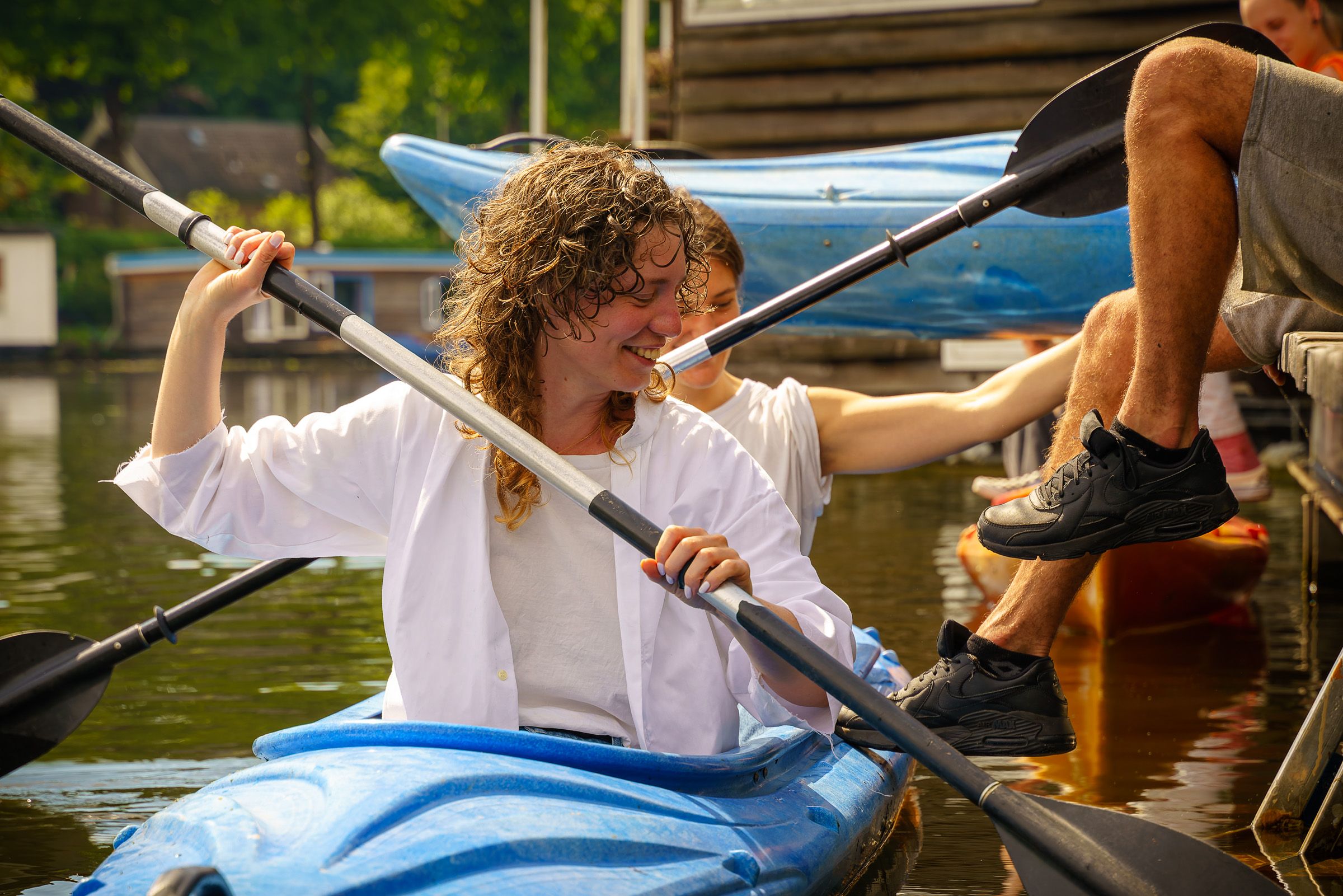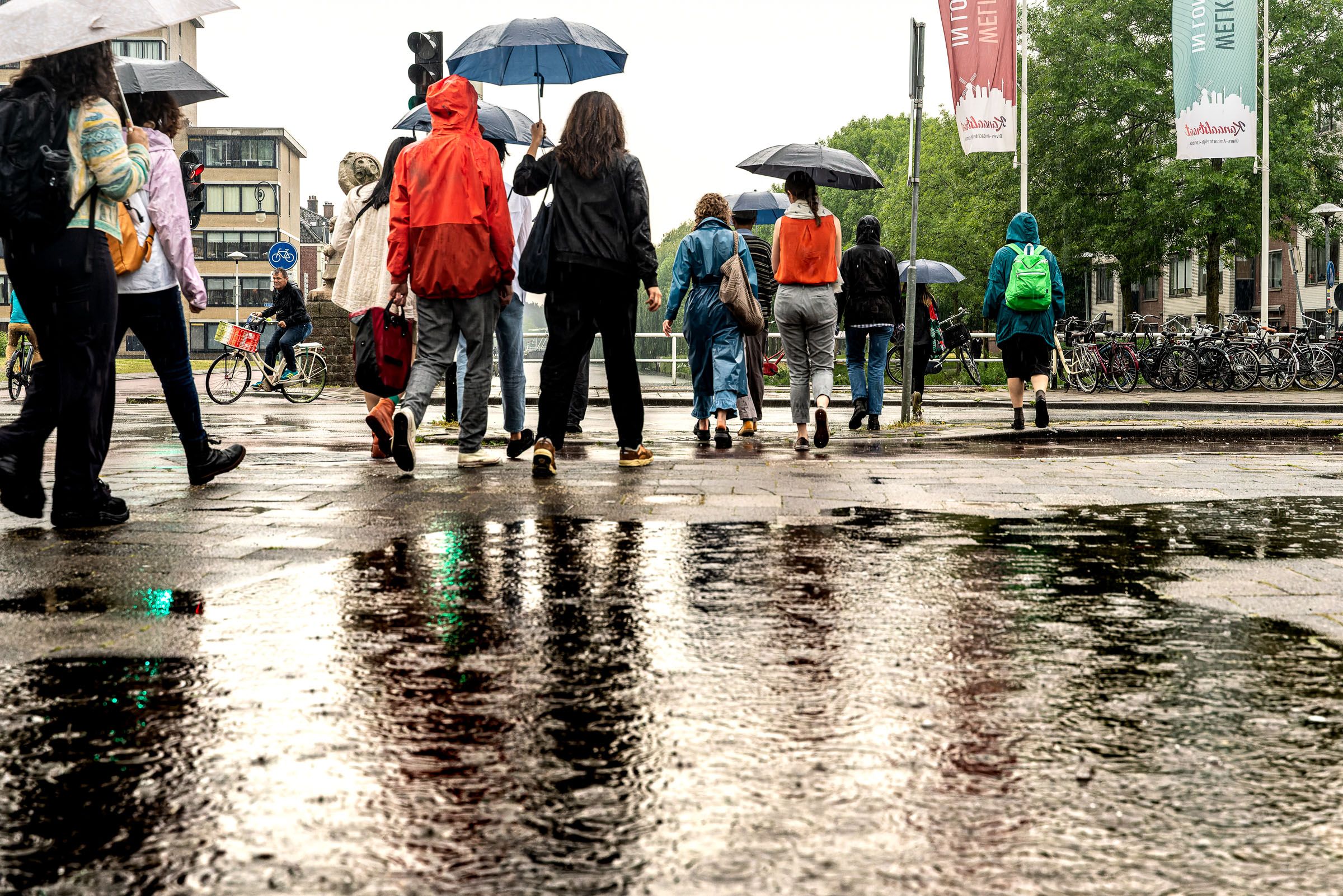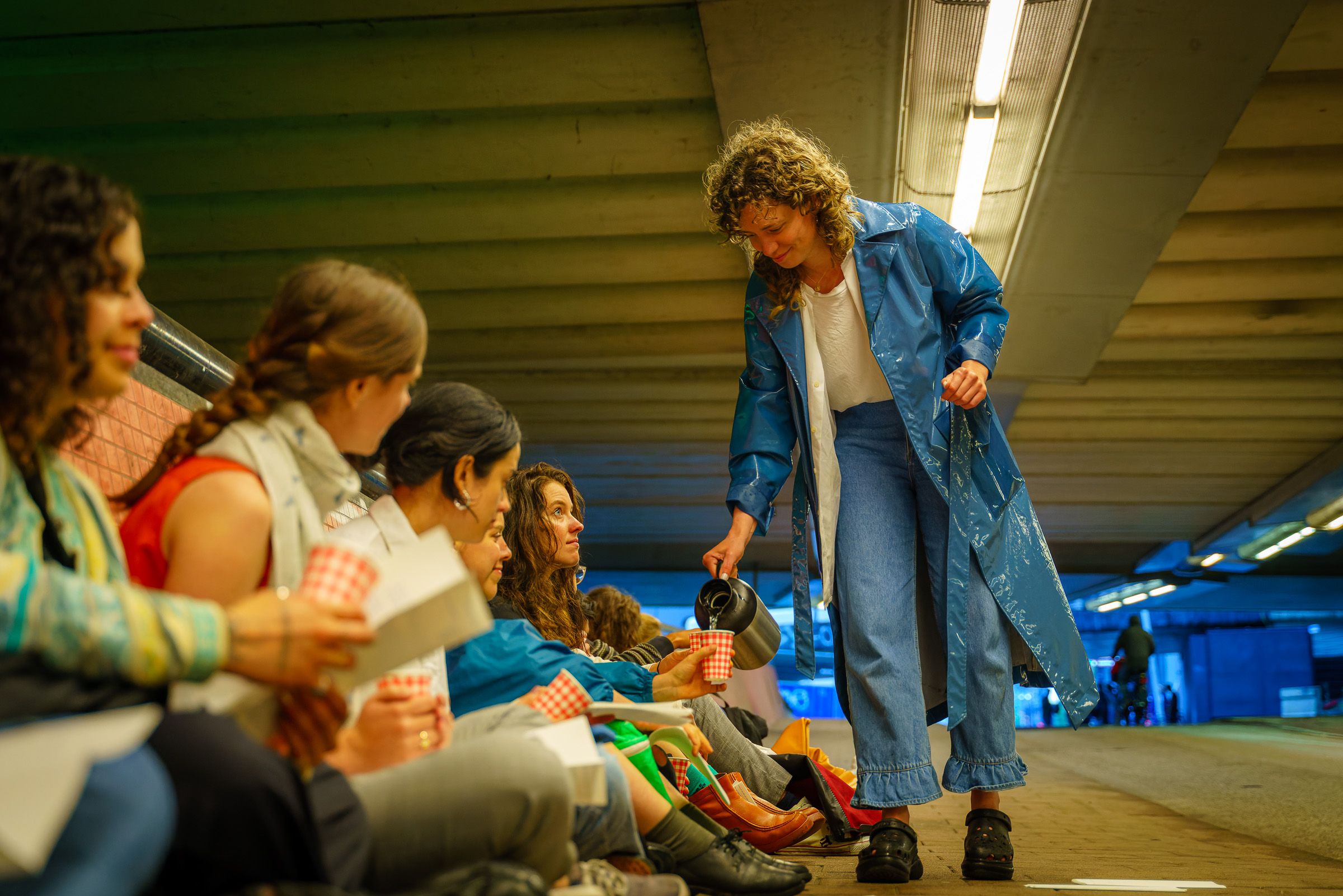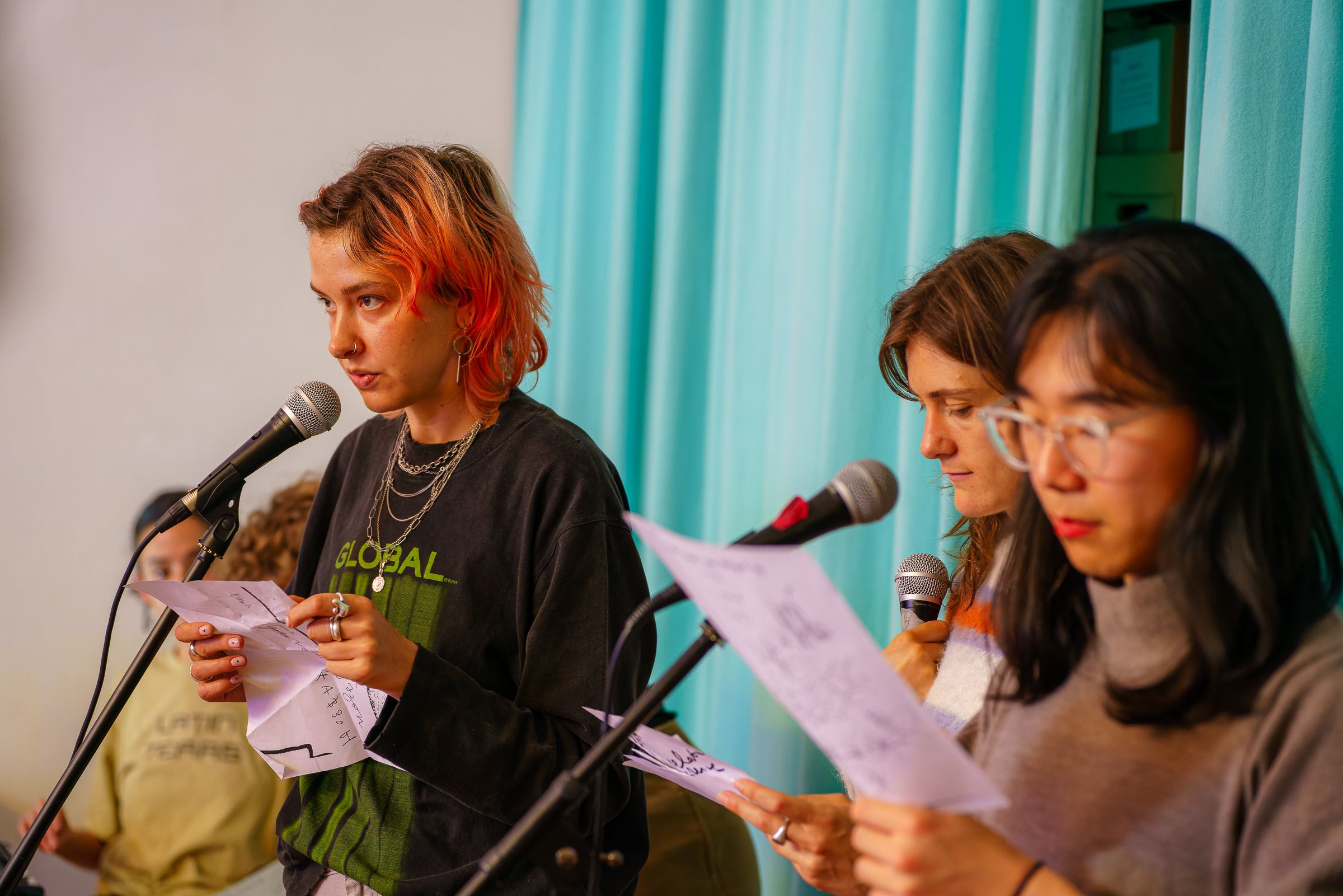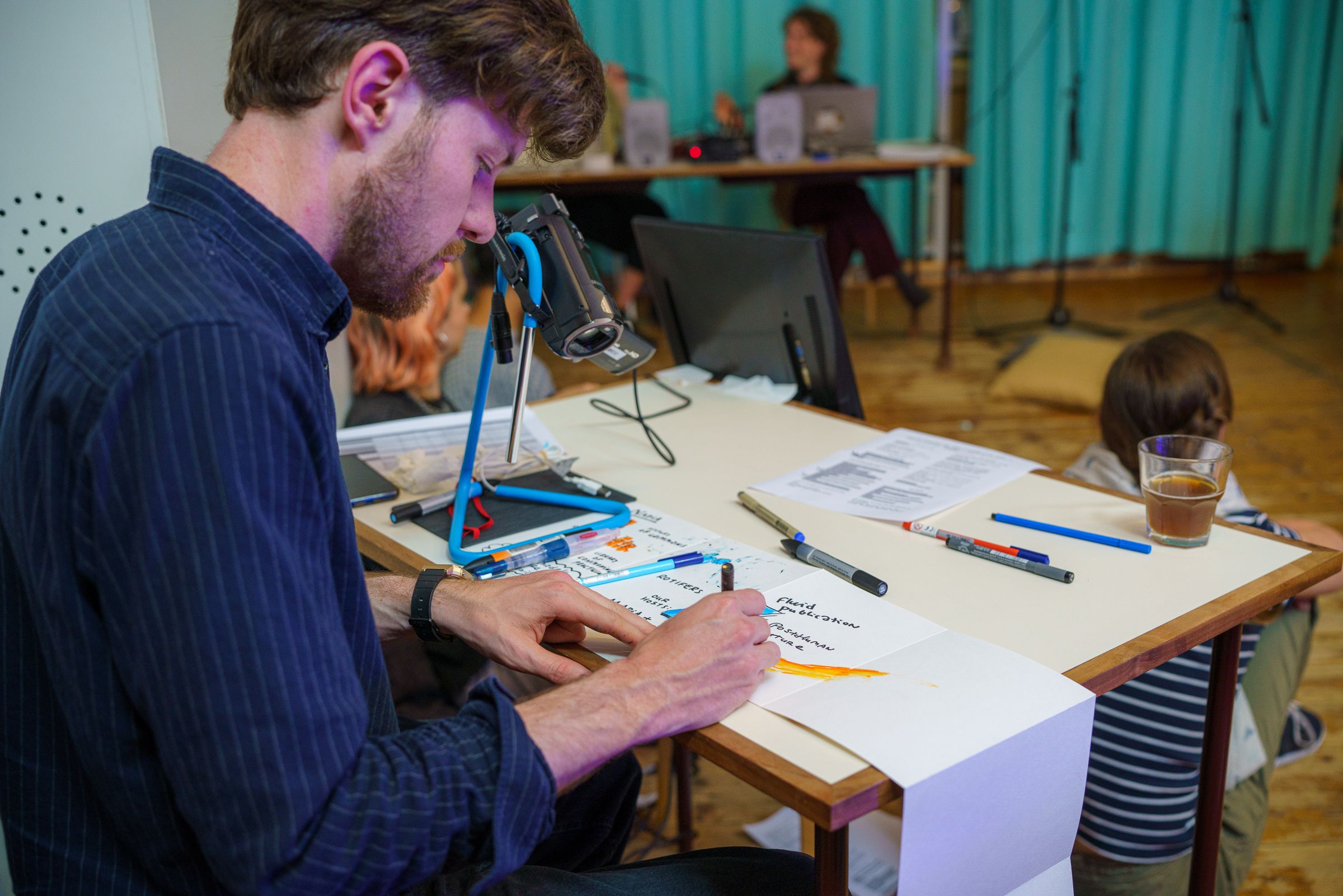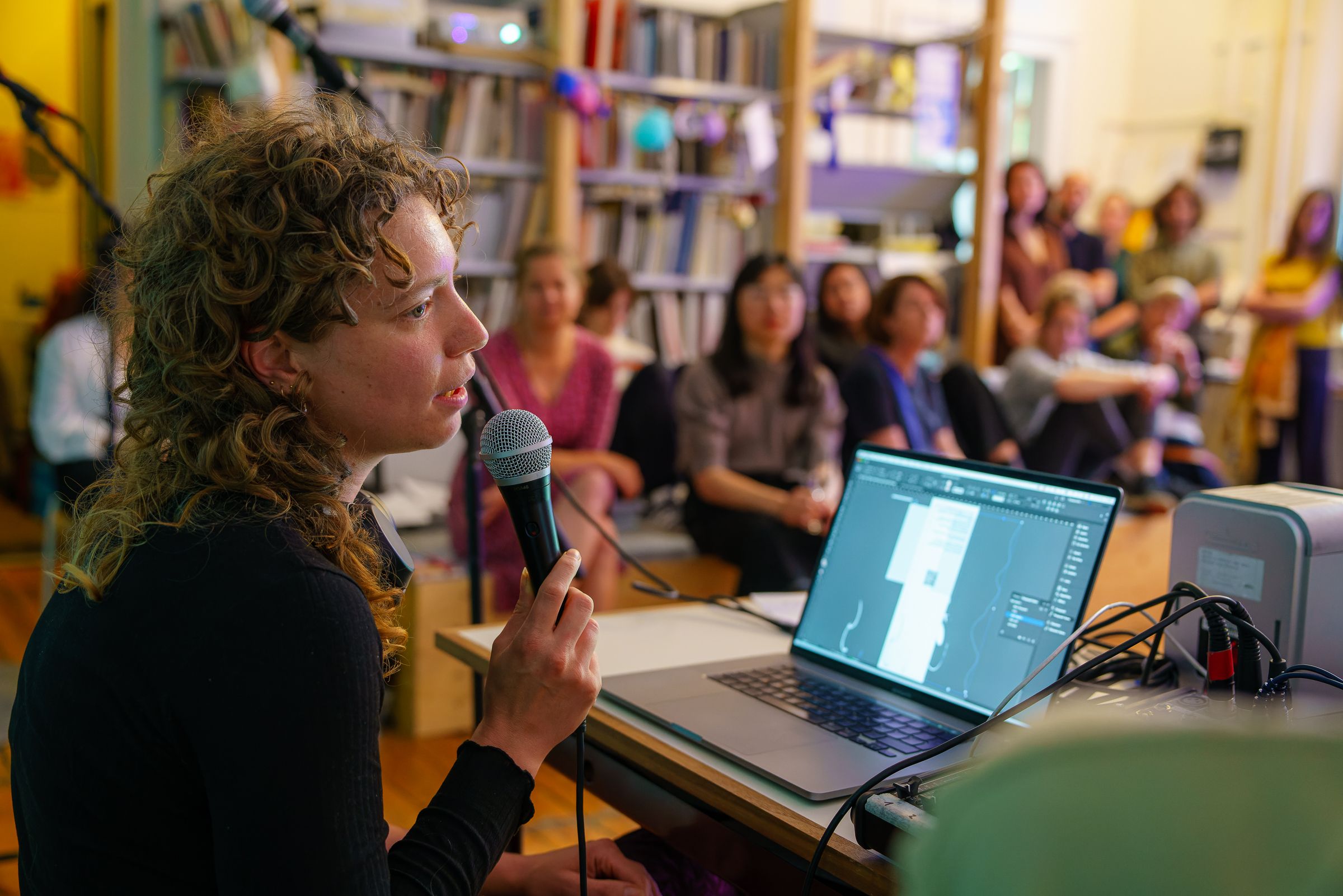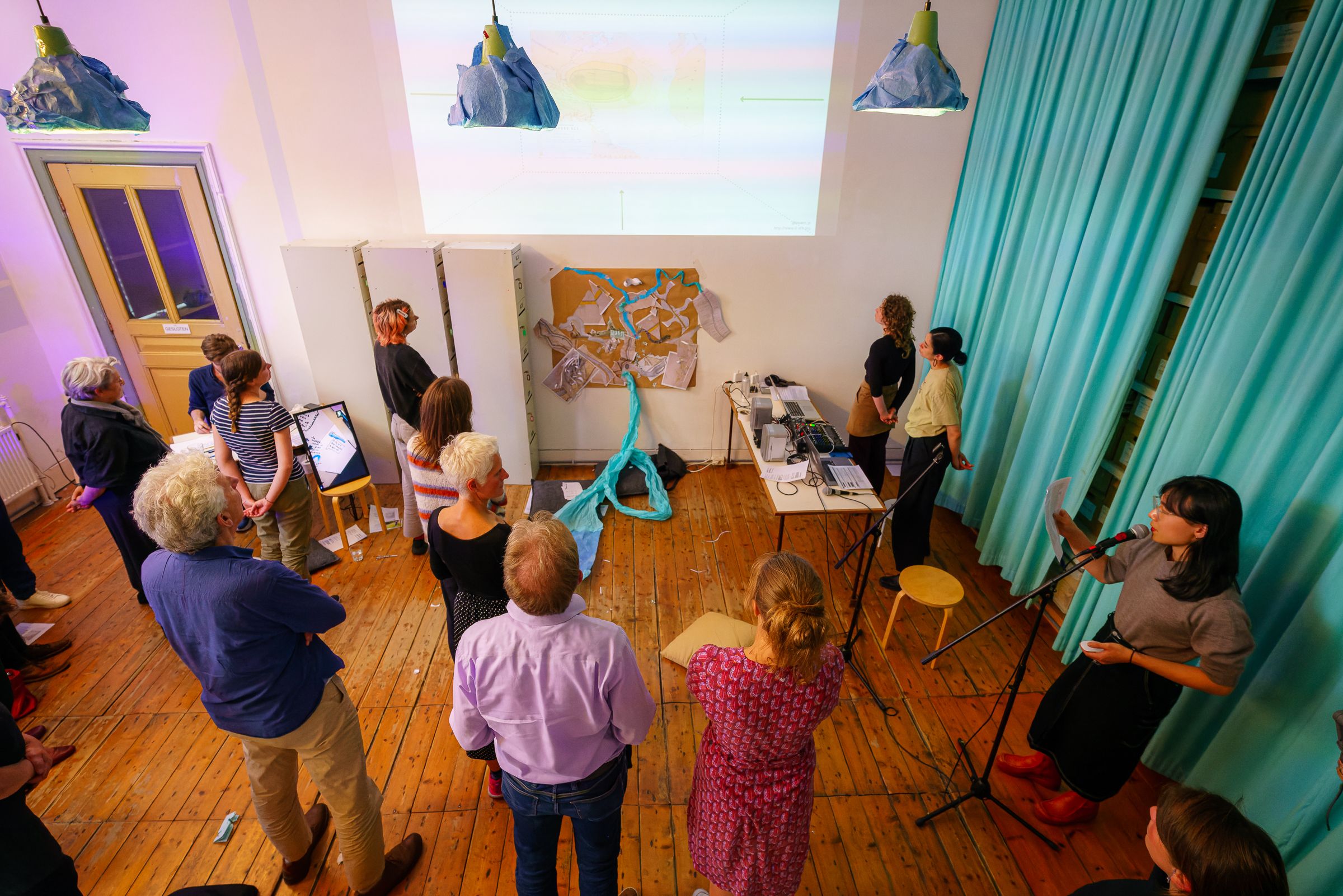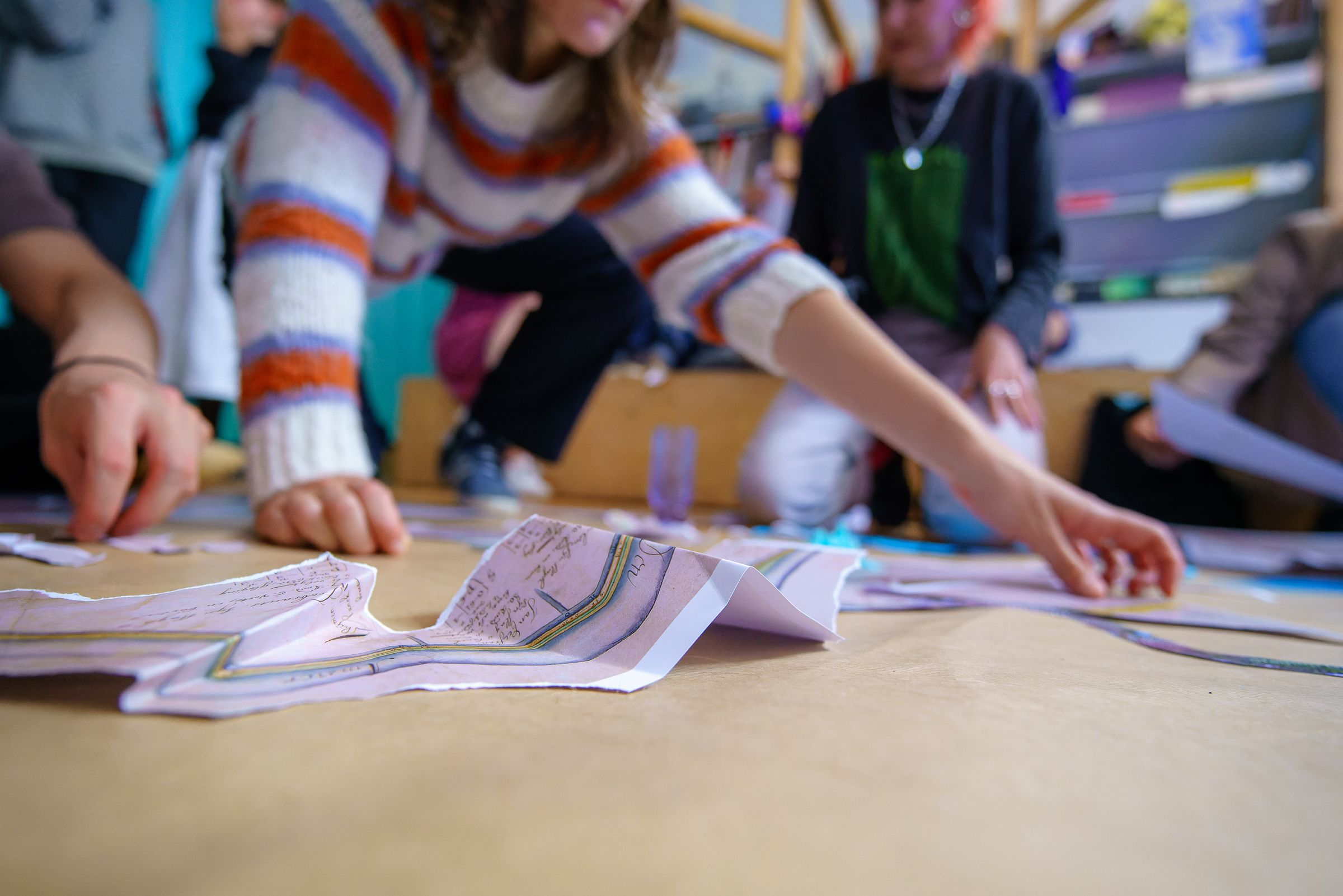Water is What We Make It – How Utrecht’s water unites us
19-20 May, 2-3 June, 9-10 June 2022Collab. with Casco Art Institute –

Water is What We Make It is an investigation initiated by Gemene Grond in which art, philosophy, ecology, science and urban planning all come together. This programme examines in which new ways we can best work together in our city. After all, we all live here together and share the streets, squares, cycle paths, rivers and buildings with one another. In this project we worked together closely with Utrecht city council and a range of experts, such as the city ecologist and the urban planners involved in the redevelopment of Leidse Rijn, Utrecht’s main central waterway.
We brought together a large group of specialists: artists, thinkers, designers, ecologists and urban planners. They went to work on the theme ‘hydrocommons’ and the ways in which we make connections with one another in the public space. A brief explanation of the theme: hydro means water and commons communal property – that is, water that belongs to all of us. We examined the Leidse Rijn as part of the Rhine delta and as water that in the future will flow into the historic canal encircling the city, the Stadsbuitengracht.
The programme generated a wealth of imaginative and valuable input: participants came up with the most wide-ranging ideas, dreams and creative plans for the redevelopment of the Leidse Rijn and its banks in central Utrecht. The results of the session were shared in a public presentation on June 10, 2022 at the Casco Art Institute, Working for the Commons (Utrecht).
The presentation was broadcast live on Good Times Bad Times and you can listen to it here.
Who and what is connected by the water?
Gemene Grond issued a public invitation to artists, designers and academic experts to come together for a six-day exchange of ideas about the hydrocommons. Ten international thinkers and makers took the connecting waters of Utrecht as their starting point, focusing particularly on the Leidse Rijn in the area of Lombok, whose waters will in the future once again be channelled into the encircling canal. The participants sat round the table, undertook frequent excursions and gave lectures and readings centred on the question ‘Who and what are connected, affected and moved by Utrecht’s waters?’ Framing the question in such a way enables the interlocutor to go beyond the human viewpoint. For the Leidse Rijn can be viewed in all kinds of ways: it’s a canal with flowing water, used by people for recreation and commerce, and simultaneously it’s home to all kinds of plant, animal and birdlife in its waters and on its banks.
A new dialogue
Gemene Grond embarked on this project because the Leidse Rijn in Lombok will undergo significant change over the coming years. At present the Leidse Rijn still runs partly underground; you can’t see it or experience it. But in the future the Leidse Rijn will be extended. The planned Lombok Park will lie on the waters of the Leidse Rijn along a bank rich with plants, animals and related water life. In the Van Sijpesteijn tunnel, which runs under the city’s central station, the Leidse Rijn will be broadened and linked up with the city’s outer canal ring, the Stadsbuitengracht.
So there’s a lot that’s going to change. Gemene Grond has seized this opportunity to strike up a conversation about how we can all play a joint role in developing the water. After all, water is a commons resource that belongs to us all.
New insights generate good results
The collaboration was aimed at generating greater knowledge and insight into this development in our city among those parties involved: Gemene Grond, Utrecht city council, the various actors in the development and the participants themselves. The outcome was communicated in a presentation that effectively function as recommendations on how the area should be further developed. The results remain the intellectual property of the participants themselves and can thus be freely used in their own work. By coming together to learn, to investigate and to make, we hope to showcase new ideas about our rapidly changing city and all its residents. And then we’re not just talking people, but also plant and animal life.
Successfully incorporating different perspectives
The project was successful in assembling a diverse group of participants. Together they experimented, learned, acted and spoke about the Leidse Rijn. With tangible results: the group succeeded in persuading the council to incorporate different ideas and ways of working in the design plan that had already been initiated. The participants’ recommendations were even used as a starting point for the Van Sijpesteijn tunnel design brief. It’s highly unusual for an experimental programme such as this to be used in commissioning a contemporary art piece. The resulting work of art will become a permanent part of the new tunnel.
Learning point: a broader audience
The six-day programme included a series of lectures by Rick Dolphijn (Utrecht University) and other experts. The lecture series reflected on how people should co-exist sustainably and honestly with animals, plants and other life around us. We’ve become so used to the idea that people come first that we’ve forgotten that in reality we’re all part of a larger whole in which not only people but other organisms are vital. The lectures were targeted primarily at the participants, and in that sense we missed an opportunity. It would have been even more interesting to conduct this dialogue with lots of other people in Utrecht – including those council employees working on the redevelopment of this area.
Key moments
The programme yielded a range of ideas and artistic plans for the redevelopment of the Leidse Rijn and its banks in central Utrecht. The outcome was shared on 10 June 2022 in a public presentation at the Casco Art Institute, Working for the Commons (Utrecht).
The participating artists and researchers
Samar Khan, Maria Mazzanti, Kat Benedict, Laila Saber Rodriguez, Eliza Collin, Nadia Christidi, Noam Youngrak Son, Yelizaveta Strakhova, Roland van Dierendonck and Anna Bierler.
Preliminary study
Curators: Carlijn Diesfeldt en Suzanne Sanders
Artist: Xandra van der Eijk
Artistic producer and artist: Angelina Kumar
